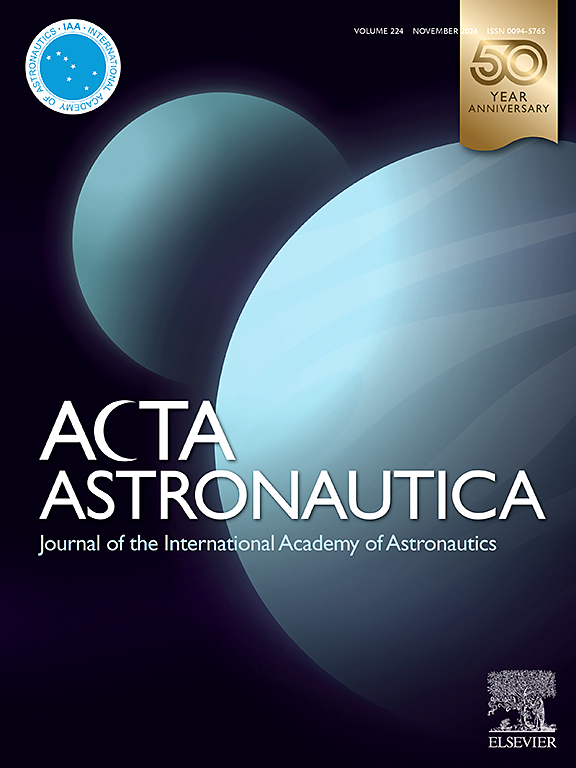Infradian cardiovascular rhythms and between subject cardiovascular coupling in Mars500 prolonged confinement study
IF 3.1
2区 物理与天体物理
Q1 ENGINEERING, AEROSPACE
引用次数: 0
Abstract
Introduction
The aim of this study was to characterize infradian rhythms in heart rate and blood pressure, as well as investigate potential synchronization of these parameters among participants in the Mars500 study. This study involved a 520-day simulated mission to Mars, during which six crew members were confined for the entire duration of the experiment.
Methods
The study involved daily measurements of blood pressure and heart rate, taken in the morning and evening for each participant. Mean differences were analyzed using a mixed model design, considering journey stage and time of day as fixed factors, and participant as a random factor. The Lomb-Scargle periodogram was used to identify rhythmic patterns in the data. Significant rhythms were described by fitting a cosine curve using a cosinor model. The level of synchronization between participants' measurements was assessed by analyzing signal pairs using the Hilbert transform. Phase differences were measured in one-month bins using the gamma parameter. Surrogate data was employed for comparison with the observed data. Gamma differences between bins were evaluated using a mixed model design.
Results
All signals showed significant changes over time, and most participants exhibited at least one significant infradian rhythm in the analyzed variables. The primary peaks varied between participants and variables, ranging from 22 days to 520 days. Interestingly, there was a consistent period of 173 days observed in the evening heart rate across all participants. Regarding synchronization, the gamma values of evening heart rate differed from surrogate data in all stages, except during the middle part of the mission.
Discussion
The primary finding of this study is the identification of significant infradian rhythms in cardiovascular variables, specifically in evening heart rate, with a shared and synchronized period of 173 days among participants. We propose that affective changes associated with different stages of the mission, along with the cohesive functioning of the crew as a unit, may contribute to these variations.
求助全文
约1分钟内获得全文
求助全文
来源期刊

Acta Astronautica
工程技术-工程:宇航
CiteScore
7.20
自引率
22.90%
发文量
599
审稿时长
53 days
期刊介绍:
Acta Astronautica is sponsored by the International Academy of Astronautics. Content is based on original contributions in all fields of basic, engineering, life and social space sciences and of space technology related to:
The peaceful scientific exploration of space,
Its exploitation for human welfare and progress,
Conception, design, development and operation of space-borne and Earth-based systems,
In addition to regular issues, the journal publishes selected proceedings of the annual International Astronautical Congress (IAC), transactions of the IAA and special issues on topics of current interest, such as microgravity, space station technology, geostationary orbits, and space economics. Other subject areas include satellite technology, space transportation and communications, space energy, power and propulsion, astrodynamics, extraterrestrial intelligence and Earth observations.
 求助内容:
求助内容: 应助结果提醒方式:
应助结果提醒方式:


